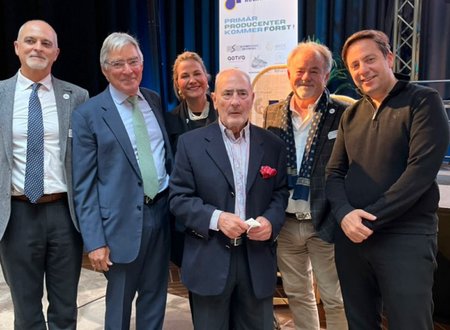Norwegian parliament postpones aquaculture reform
The existing "traffic light" system and maximum allowed biomass will stay in place until a new regulatory framework is finalized and adopted.
EU launches Ocean Pact, strategic research agenda in genetics released
With the launch of the EU Ocean Pact, an agenda that outlines shared research and innovation priorities in the sector to support sustainable and competitive aquaculture in Europe has been released.
Non-invasive AI system to streamline sturgeon sex determination
US researchers aim to develop a user-friendly, farm-level solution for sturgeon producers.
Singapore boosts sustainable aquaculture with new tilapia breeding center
Managed by the Singapore Agro-Food Enterprises Federation (Safef) and funded by the Singapore Food Agency (SFA), the center aims to produce selectively bred young fish by early 2026.
Salmon short operculum linked to initial feeding and operational routines
A recent project led by NMBU and Åkerblå confirms that operculum shortening in salmon typically occurs early in the initial feeding period and is linked to operational and production routines, particularly feeding
Norway greenlights major salmon hatchery
The USD98 million hatchery aims to produce 15 and 20 million salmon smolts per year.
Humberto Villarreal has passed away
Dr. Humberto Villarreal, a pioneering aquaculture researcher and leader in Latin America, has passed away, leaving a lasting legacy in sustainable aquaculture development.
Benchmark Genetics CEO steps down
Geir Olav Melingen has decided to resign from his position, while Novo Holdings has initiated the search process for a new CEO.
BioMar partners with local manufacturer to launch first aquafeed produced in Iceland
The partnership with Fóðurblandan makes BioMar the only global manufacturer with aquafeed production in Iceland.
CAT develops low-density genotyping panel for black tiger shrimp
The panel provides the ability to reveal critical insights needed to accelerate genetic progress in P. monodon.
New test developed to detect Bonamia in oysters
UK researchers have developed a method to detect the deadly oyster parasite without harming the shellfish.

Action, excellence and legacy celebrated at the 57th FEAP Annual General Meeting
More details unveiled for World Aquaculture 2025
FAO launches course on aquaculture breeding and genetics
World Aquaculture Safari 2025 Conference partners with GIZ

Salmon short operculum linked to initial feeding and operational routines
Alltech shares global feed production survey data
Cargill’s aqua nutrition business marks 16 years of sustainability reporting
Alltech Coppens releases 2024 Sustainability Report
Innovations in Hatchery Feeds
Aquaculture hatcheries traditionally rely on rotifer and Artemia as live feeds for the early larval stages. But technology is evolving and has allowed the industrial production of other live feed species and smaller dry feeds.
Hatchery Feed & Management hosted this webinar to discuss some of these recent innovations, with two of the recent disruptors in live feeds, CFEED and Planktonic, and inert feeds with BioMar.
Sponsored by CFEED and Planktonic.
Moderator: George Koumoundouros, Professor of Marine Biology, University of Crete
Vitapro launches new diet for shrimp broodstock
Nicovita introduces innovation to enhance the early stage of shrimp farming
INICIO N is built on four key pillars: high-quality larvae, an advanced initial feed portfolio, specialized technical advisory services, and precision-feeding technology.
Japanese company unveils land-based aquaculture system
The systems has the potential to efficiently farm large amounts of fish even for those with no aquaculture experience.
Skretting, Zooca introduce copepod feed for marine juveniles
Fish and shrimp hatcheries now have access to fresh, canned Calanus finmarchicus.
New IP camera purpose-built for AI applications in aquaculture
ReelData released a camera developed from the ground up for AI applications in aquaculture.

